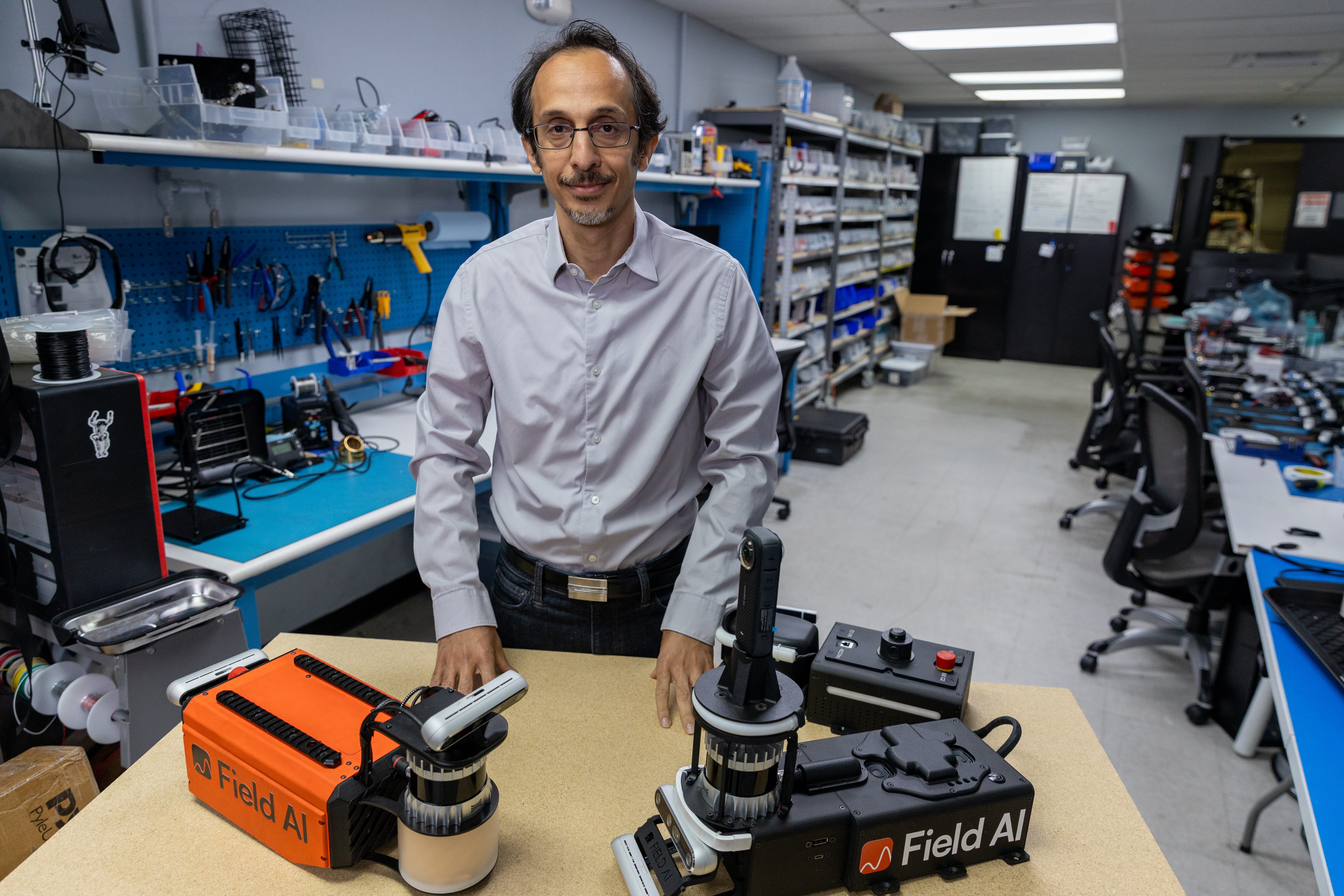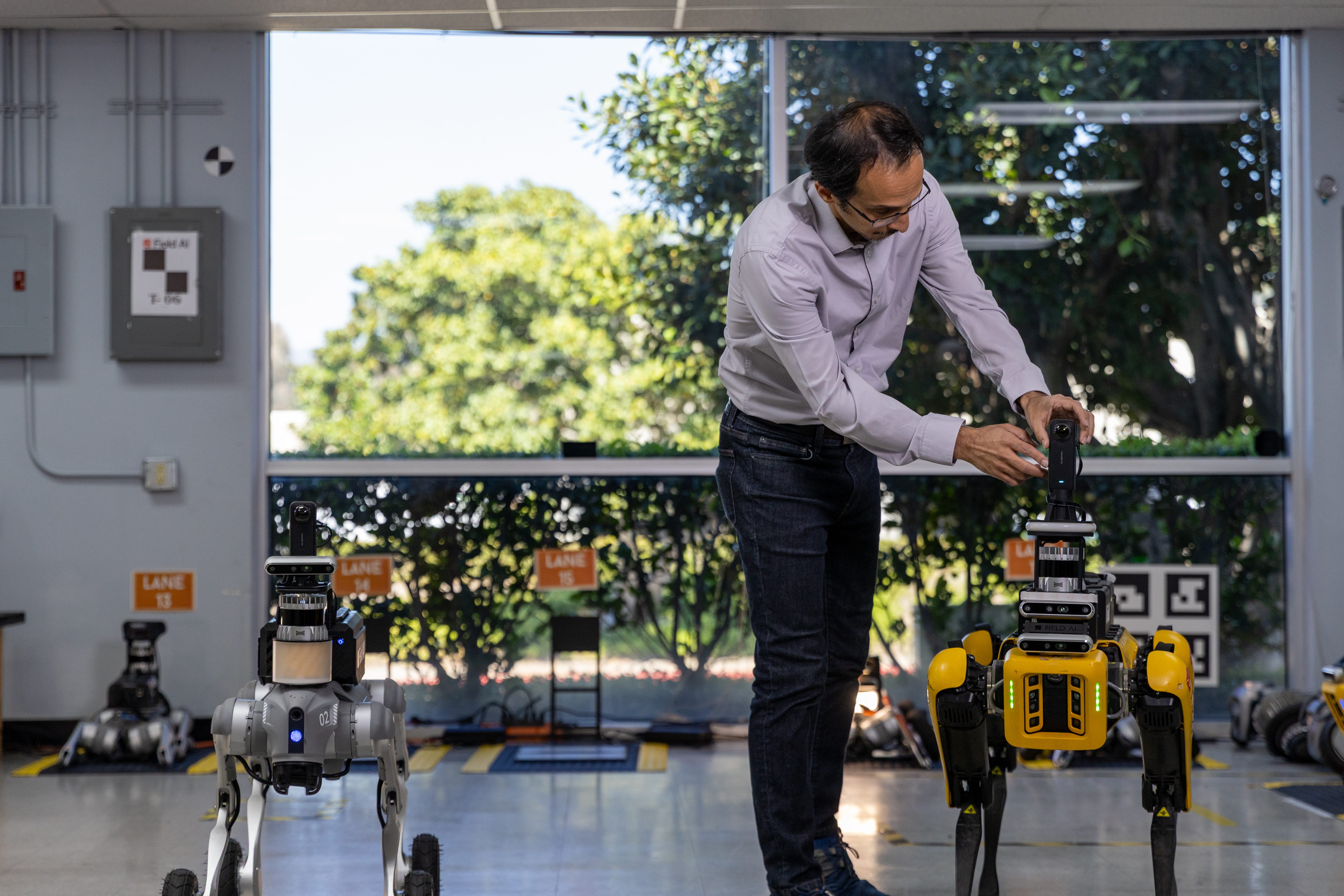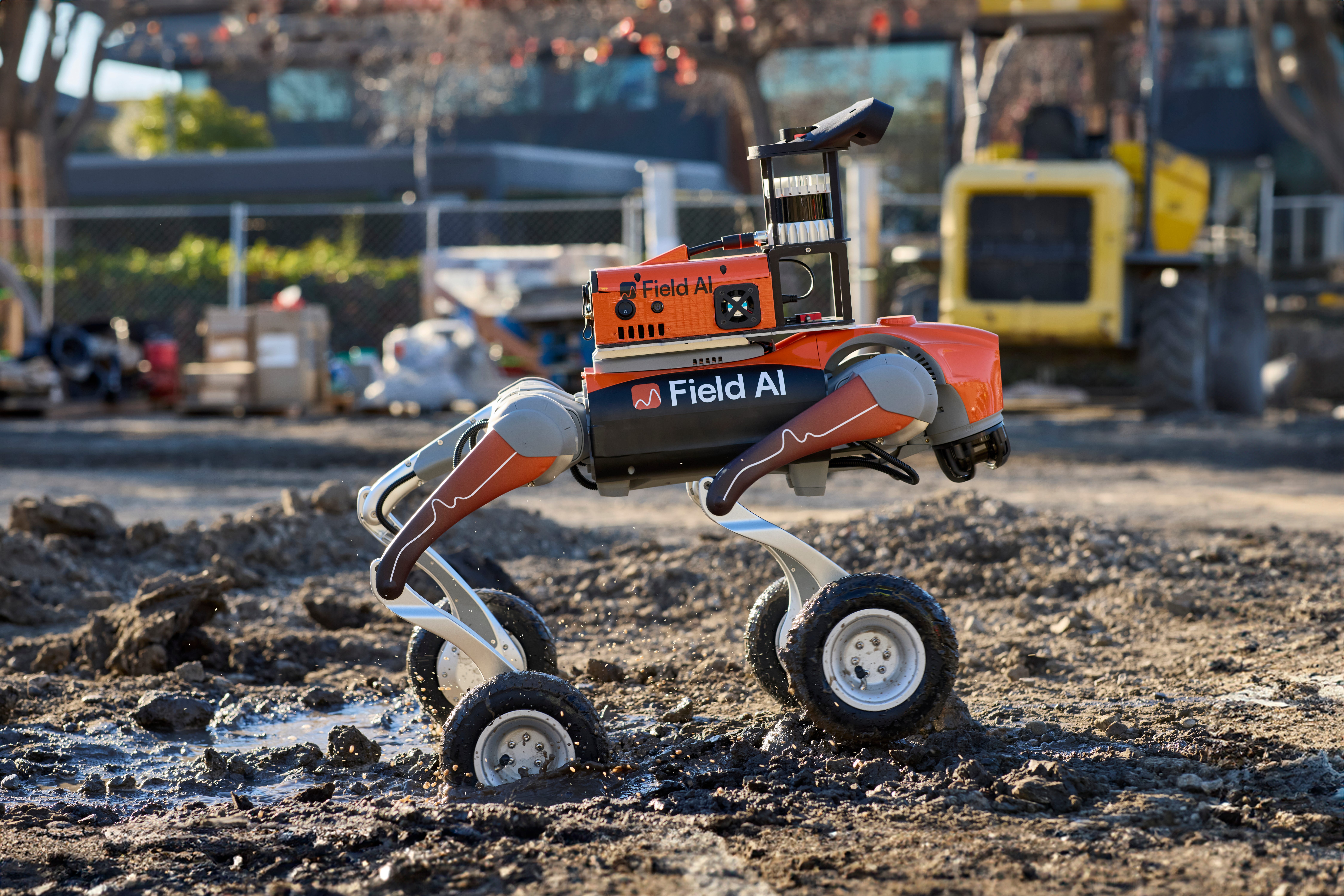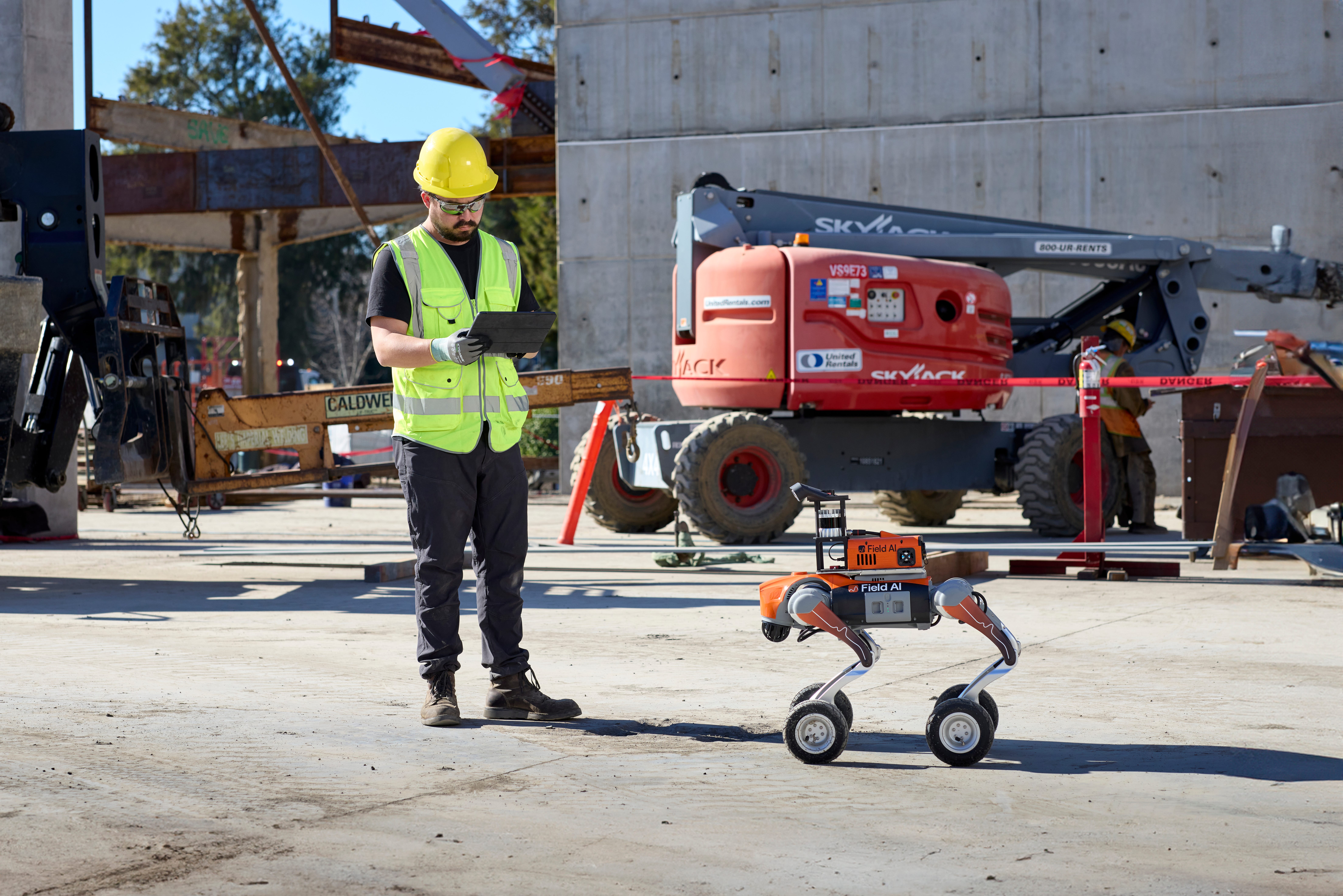
FieldAI
- FieldAI recently raised $405 million from industry giants including Gates, Bezos, Nvidia, Intel.
- AI has gotten much better at digital tasks, but struggles in the physical world.
- FieldAI robots perform relatively simple jobs, while collecting fresh data, and build from there.
In a recent South Park episode, Randy Marsh urges his daughter to learn hands-on skills because AI will automate many knowledge-based jobs.
“AI can do everything better than we can, except for stuff that requires arms,” he says.
It’s funny, but also true. AI models are getting really good at digital skills such as coding. Beyond bits, though — in the physical world — AI is nowhere near matching the ability of humans to perform many different tasks.
A big reason for this yawning capability gap is data. In the digital world, the internet provides a readymade mountain of information that machines can learn from. In the world of atoms, there’s no equivalent.
This physical-world data mountain must be built from scratch. It’s a herculean task. I recently met an unassuming startup founder who’s hacking away at this problem in an interesting way.
Data without physical assets

FieldAI
Ali Agha spent seven years at the NASA Jet Propulsion Laboratory in Pasadena, California, developing autonomous multi-robot systems for exploring different environments, including Mars. He started FieldAI in early 2023 and has a team of robotics and AI experts from companies including Google, DeepMind, Waymo, Tesla, Nvidia, Boston Dynamics, and Amazon.
In the race to amass all this physical world data, some big tech companies have a natural advantage. Tesla has huge vehicle and battery factories. Amazon runs hundreds of massive warehouses. Foxconn assembles millions of iPhones and servers in gigantic plants. If you don’t have such assets, you have to get more practical and inventive. And this is exactly what FieldAI has done.
Its AI models are designed to get many different types of robots out into real-world situations as quickly and safely as possible. Once there, they perform relatively simple but valuable tasks. While doing this, these machines constantly collect new data, which is fed back into the startup’s AI models, which helps them improve. This, in turn, helps FieldAI release more robots into new situations, where, again, they gather even more data and learn all over again.

FieldAI
This is a contrast to some other AI robotics players, which are working on much more ambitious capabilities before getting their machines out in the wild.
“You’re deploying more, you’re getting more data, and that data makes the model better, which helps you deploy even more, and even more data is starting to be collected,” Agha told me in a recent interview. “This flywheel has started spinning faster and faster.”
Big investors

Reuters
In the six months of 2025, FieldAI contracted 10 times more robots than in the first half of 2024. This is helping to drive that flywheel of real world data collection.
This has caught the eye of major investors. In August, FieldAI raised $405 million, one of the largest startup funding rounds this year. Backers include Nvidia, Jeff Bezos, Bill Gates, Vinod Khosla, Intel, Samsung, and Laurene Powell Jobs.
“Enabling autonomy solutions at scale is an extremely difficult problem, but the deep expertise of the FieldAI team and their unique approach to embodied intelligence reflects a pragmatic path forward,” said Khosla, who was one of the first investors in OpenAI.
The new money will pay for new hires and a major push to “productize” FieldAI’s novel approach, according to Agha. That means getting a heck of a lot more data-collecting robots out into the world.
The startup’s AI models are designed to control many different types of robots, from quadrupeds to humanoids, wheeled robots, and passenger-scale vehicles. The machines are already deployed in Japan, Europe, and the US, in industries including construction, energy, manufacturing, urban delivery, and inspection.
Agha took me through a practical example from the construction industry to show how FieldAI’s approach is working.
BIMs, robots, and ROI

FieldAI
Building Information Modeling, or BIM, is an established way to create a detailed digital copy of a construction project, so progress and issues can be tracked accurately.
Usually, BIMs are maintained and updated by human employees walking around construction sites, recording details manually by taking photos and writing notes.
Instead, FieldAI deploys robots to conduct these site tours and update BIMs automatically. This helps construction companies keep better track of the projects, and it’s more thorough and cheaper than hiring human workers to walk around for hours doing this task, according to Agha.
A key task is taking photos regularly so you can go back over time and see a project’s progress, or a lack of progress. Was the drywall put in before all the piping was finished? If there’s a disagreement between the contractor and the insurer, for instance, having an extremely detailed photographic record of the project over time is key.
A robot can walk around these huge sites non-stop, 24/7, while a human can’t, which makes these automated BIMs much more detailed and accurate, Agha noted.
As FieldAI machines tour these sites, they constantly collect new data, which gets fed back to improve the AI models that power the robots. Then, next time, the robots can add more tasks.
“A huge benefit of these platforms is that they compound future use cases,” Agha said. So one month, a FieldAI robot is taking site photos. The next month, it might also check that the safety barriers are in the correct place. The following month, it might add inventory tracking. There were 100 copper pipes on the second floor yesterday so why are there only 25 now?
The end result is that construction projects can be monitored more closely for less cost, increasing customers’ return on investment, according to Agha.
“The key for ROIs, is that the person who was previously walking six hours a day around these massive sites — this person now spends most of their time checking the incoming data from our robots and is analyzing where there’s progress and why these other things haven’t happened,” he said.
Recently, FieldAI had to pull one of these robots from a construction site, due to a paperwork issue. The project superintendent kept calling to ask when the robot was coming back, because they’d gotten so used to an automated system patrolling the site and reporting back so often, according to Agha.
“That was a signal for us,” he said. “It was a validation that helped to convince us that this is the right time to grow.”
Sign up for BI’s Tech Memo newsletter here. Reach out to me via email at [email protected].
Read the original article on Business Insider
The post AI robotics has a big data problem. This startup raised $405 million to fix it in surprising ways. appeared first on Business Insider.




